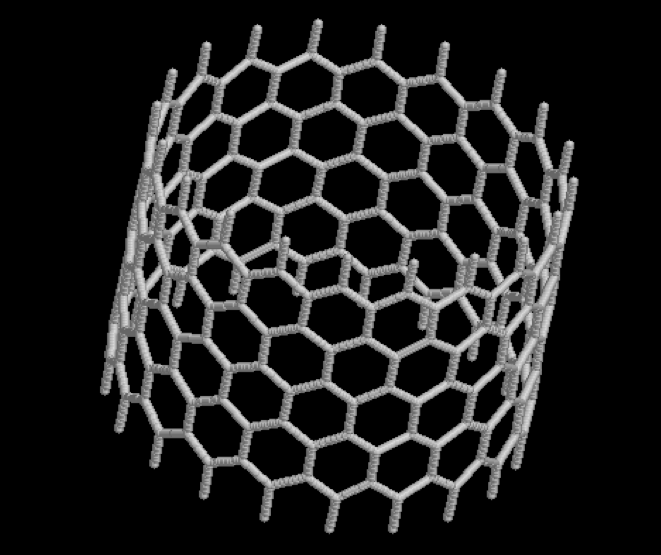
For our simulation, we decided to model the Carbon Nanotube as immobile Carbon atoms, this is done by setting their mass to infinity in UPI. The Hydrogen molecules are by default treated as spherical particles in UPI.
We have written a MATLAB script, nanotube.m (or nanotube.m.txt, for some browsers), which outputs the xyz coordinates of both the Carbon atoms and randomly dispersed Hydrogen molecules in two separate files. The code can generate (n,0) zig-zag Nanotube of any length and can distribute the Hydrogen evenly, all inside, or all outside.

The C-H2 interaction potential was modeled as a Lennard-Jones potential[9] with ε = 42.8K, and σ = 2.97Å. The H2-H2 interaction was set to be the default UPI potential, which is a Silvera-Goldman potential[10]. This can be likened to a L-J potential with ε = 34.3K, and σ = 3.04Å[9]. Both potential cut-offs were set to 12Å
Due to the relatively large L-J potential well for the C-H2 system, preliminary runs with a (10,0) Nanotube (diameter ≈ 8Å) showed that we needed bigger tubes. In the end we decided to use (20,0) Carbon Nanotubes (radius = 7.85Å) for its large outer surface area. The periodic box was set to have five times the Nanotube radius in the x and y directions, and 3 "layers" of the Nanotube in the z direction. Giving a total of 240 Carbon atoms in the periodic box.

Choosing the specific initial system conditions proved quite problematic. At first, we wanted to simulated how well the Hydrogen would adsorb on the inside as compared with the outside at various temperatures. However due both the large equilibrium distance of the H2-C interaction and the small volume inside the Nanotubes, Hydrogen on the inside were packed into an almost immobile "solid". In principle, this could be done with even higher Hydrogen densities on the inside to see when the Nanotube would start to leak. However, since our Carbon atoms are immobile, we would not known if the Nanotube would have already bursted before leaking Hydrogen.
Due to complications and limitations stated above, we decided to see run the simulation with only Hydrogen on the outside of the Nanotubes and only at reasonable pressures. This setup will quantitatively probe how well Hydrogen molecules adsorb onto the outside of Carbon Nanotubes at various temperatures.
Jaron Krogel, Stefano Markidis, and Henry Wu